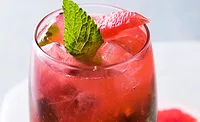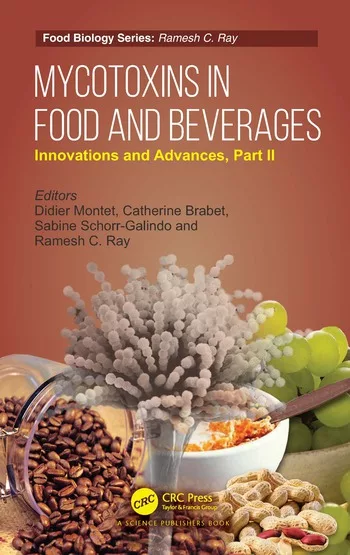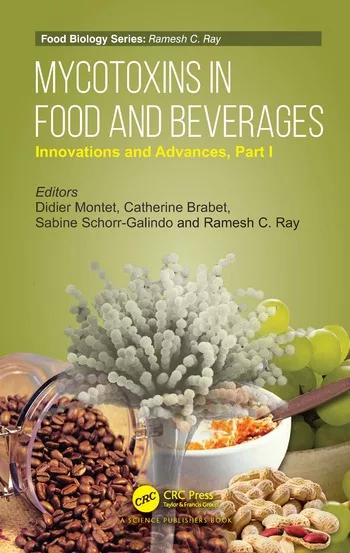Citrus offers familiar taste in new products
Clean-label, plant-based citrus resonates with consumers


The familiarity and fresh-from-the-vine natural goodness of citrus fruits have been resonating with consumers for decades. Used as a single, recognizable ingredient in orange juice or lemonade, citrus ingredients are adding a refreshing, good-for-you boost to a wide variety of products and can be used alone or in combination with other flavors to deliver differentiated taste experiences.
Experts note that citrus fruits like oranges, lemons, pineapples and grapefruits are a staple in juices, and also are proliferating in still and sparkling waters, sports beverages, energy drinks, ready-to-drink (RTD) teas, coffee, and beer. They also are used in combination to add a refreshing twist to even more beverage applications including spirits, mocktails and low-proof alcohol beverages, they add.
“Citrus ingredients may be used to add differentiation to products, are associated with being ‘good for you’ and can add a ‘refreshing lift’ to the taste profile of a variety of products,” says John Buckley, vice president of taste innovation at Kerry, Beloit, Wis. “According to Mintel, citrus flavors that are gaining fast momentum in the marketplace include tangerine, blood orange and pineapple, all of which are seeing a 50 percent increase in menu presence over the past four years. … Orange has a presence on menus at over 90 percent.
“The familiarity of citrus can act as a ‘gateway’ for a consumer to try a new flavor when paired together,” he continues. “Citrus may also help to revitalize brands and add product differentiation and extensions, as seen in the growing variety of cranberry and citrus cocktail blends now available on grocery store shelves, for example.”
Mukul Juneja, director of product experience marketing at Chicago-based Archer Daniels Midland Co. (ADM), also points to this trend. “Classic flavors like orange, lemon and lime continue to play an important role in our daily lives, in part because they are so inherently delicious, widely available virtually regardless of their original growing regions and seasonality, and because consumers can strongly relate the flavors of these true fan-favorites to their plant-based sources.
“Many new launches still feature these popular and familiar favorites with a twist,” he continues. “As consumer tastes evolve and manufacturers continue to strive to differentiate themselves, we’re seeing stronger demand for traditional flavors partnered with more specific complementary citrus flavors including Valencia orange, blood orange, ruby red grapefruit, green melon and much more.”
Ahmed Nour, category development manager of the flavors division for beverages at Symrise NA, Teterboro, N.J., notes that orange, lime and lemon are the most common fruits used in juice formulations. “Citrus ingredients can increase functionality and can be used instead of citric acid for a more premium and natural offering,” he says. “Citrus flavors pair well with water, tea, sparkling drinks and alcoholic drinks. … I’ve also seen citrus juice concentrates in premium RTD coffee products replacing citric acid.”
Blake Wester, senior applications scientist of beverage at Flavorchem Corp., Downers Grove, Ill., also highlights the functional and marketable benefits of using citrus flavors in beverage formulations.
“Citrus flavors, especially lemon, work very well with stevia blends,” he explains. “They help to cut the bitter aftertaste and linger. Also, citrus is a natural source of acid, so they can be a good substitution for citric acid, if you have a customer that would prefer to not have that on the label, or as a source of ascorbic acid if you need vitamin C fortification.”
Natural appeal
Consumers’ associations with citrus flavors as natural also offers a positive product attribute to beverage-makers looking to reach a broad audience.
Betty J. Honaker, vice president and chief financial officer at Fenton, Mo.-based Rocket Products Inc., notes that ingredient suppliers are using citrus ingredients for their recognizable, natural appeal.
“They are trying to go after a larger market with the whole household, not just adults,” she says. “Children drink these beverages on a daily basis for healthier choices. … They also can be blended with other flavors for more choices, i.e., strawberry lemonade, peach lemonade, raspberry lemonade. Parents are looking for healthier, cleaner label options (no preservatives and added artificial colors).”
Wester notes that lemon is among the most utilized citrus ingredients because it blends well in just about any flavor combination. “Plus, lemonade will never go out of style,” he says.
Beverage formulators also are using citrus ingredients in a multitude of ways to increase functionality. “In addition to delivering on a great taste, citrus ingredients may be utilized to deliver ‘servings of juice’ and ‘servings of fruit’ in application and also as a delivery vehicle for materials such as vitamin C,” says Renata Ibarra, senior research development and applications director for Taste at Kerry. “In some cases, citrus ingredients may help to provide texture (pulp) as well as assist in delivering a natural cloud. Citrus ingredients are, and have been, the most used ingredient in the beverage industry.
“… Citrus flavors are usually derived from citrus oils and citrus components,” she continues. “A citrus beverage can be flavored with a citrus extract, a citrus flavor or a citrus emulsion, but can also contain juice in addition to these flavorings. The final beverage will be clear if an extract is used and cloudy if the flavoring component is an emulsion, which can also contain colors.”
Rising to the challenge
Although citrus is in demand in beverage applications, the supply of citrus fruits has been impacted by citrus greening disease, or huanglongbing (HLB), which is significantly impacting crop size and quality in Florida, Kerry’s Buckley says.
“There likely will be sourcing of citrus materials from other parts of the world not as severely affected by greening such as Brazil and potentially California. The citrus industry in Florida is looking for long-term solutions to battle the effects of greening and it is likely that the industry will make a comeback,” Buckley explains. “That being said, citrus flavors are in high demand and will be an important component in beverage formulations for years to come.”
Innovative uses of citrus are increasing, with the ingredient being used in many new and trending cocktail concepts as well as flavored low-proof beverages, says Kerry’s Steve Fowler, director of applications for flavors.
“At Kerry, we recently used citrus extracts to provide a claim of vitamins in soft drink concepts for a customer. They were looking to make a vitamin C claim for nutrition, and we were able to meet that objective with our portfolio of crystalized citrus ingredients,” Fowler says. “Our fruit Crystals can be a great way to add nutrition, functionality as well as great taste to a beverage.”
Citrus flavors also are adding a refreshing twist to craft beers. For example, Rochester, N.Y.-based Genesee Brewing Co. introduced Orange Honey Cream Ale, a craft beer with flavors of orange, honey and a blend of spices.
But no matter which beverage category they are used in, ADM’s Juneja notes that citrus fruits and flavors likely will remain popular in beverages due to their clean-label claims and varietals.
“We see citrus increasingly paired by alchemists, mixologists and our own product developers across a growing range of flavored beverages, dairy products, sauces, dips and more — including citrus with garden-fresh herbs, functional botanicals, sweet and sour, and heat combinations,” he says. “Although in name and presentation, the flavor combinations may not be obvious so there’s most certainly an element of surprise.” BI
Looking for a reprint of this article?
From high-res PDFs to custom plaques, order your copy today!







